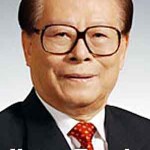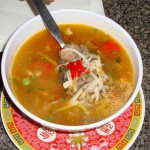Just for Fun: A Review of the National Day Celebrations – Fashion & More!
China does very few public celebrations haphazardly and yesterday’s National Day Parade, marking the 60th anniversary of the People’s Republic of China, was no exception. With months of pain-staking practice, teaching participants to march in perfect formation and training them to change formations at the drop of a hat to create intricate symbols and slogans, the 2009 National Day spectacle will be the military parade by which all future military parades are judged.

Women Soldiers in Hot Pink, October 1, 2009
But if you were looking for the subtle artistry of the Beijing Olympics’ Opening Ceremony, forget about it. This parade was about military might and lots of it. As if out of a hip-hop video, President Hu Jintao rolled his bad-self onto the scene in a black limousine, standing up through the sunroof and pugnaciously shouting at each of the military branches as his car drove by. Even the women of the parade were flexing their military muscles. Don’t let those hot pink skirt suits fool you; with guns drawn, these ladies were ready to play with the boys. The Rockettes should be afraid, very afraid.
[youtube]5yYoIUVLVsw[/youtube]
Most interesting though was what President Hu Jintao was wearing or in the alternative, what no other Chinese leader was wearing: a Mao suit. Did President Hu not get the memo to wear a boring black western suit with some version of an equally uninspiring maroon tie? Or was he just throwing all caution to the wind, blazing his own path? In 2005, the fashion world decreed that the Mao suit’s peak was reached; that it was going the way of the fedora, in other words, to the scrapheap of fashion. But recently the fedora has made a comeback among the hipsters in places like Williamsburg and Wicker Park. Does President Hu sense an emerging trend amongst the hipsters that even the editors of

Former President of China or Leader of the Hipsters?
Vogue and GQ are missing? Former Chinese president Jiang Zemen rocked the old lady-style glasses during his tenure and since then, such glasses are ubiquitous among the hipster set. Will President Hu do for the Mao suit what President Jiang did for the old lady-style glasses? Perhaps. Expect to see Mao suits soon on a hipster near you.
All in all, the Chinese should be very proud of yesterday’s festivities. The parade was more than just impressive – it was a powerful reminder of how far China has come in the past 60 years. The only thing we at China Law & Policy thought was missing was Matt Lauer and Al Roker and their endless commentary about every unimportant, but yet fascinating detail of the parade. Perhaps for the 70th anniversary. And yes, Matt Lauer and Al Roker would definitely wear Mao suits for the event.

Matt Lauer and Al Roker of the Today Show dressed in Rhythmic Gymnastics outfits for the Beijing Olympics
 On Facebook
On Facebook By Email
By Email 















